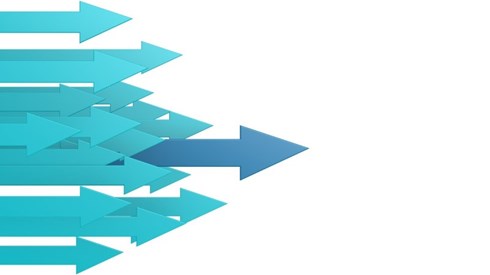Captive Use Steady Globally, Though Some Regions See Dramatic Growth

November 01, 2021

A new global survey finds that faced with volatile commercial insurance market conditions, captive insurance remains a valuable tool for organizations looking to manage and finance risks.
Globally, captive insurance use remains steady in 2021, according to Aon's 2021 Global Risk Management Survey, though there are some regions that have seen a significant uptick in captive use over the past 2 years, the survey found. According to this year's survey, global reliance on captive insurance remained constant at 17 percent of those surveyed.
But North America saw a significant increase in organizations that have a captive insurance company or an active cell in a protected cell company (PCC) to 39 percent in 2021, up from 27 percent from Aon's last Global Risk Management Survey in 2019.
Use of captive insurance in the United States is higher than ever before, according to Aon, and 12 percent of North American respondents to this year's survey reported that their organization is planning to create a new or additional captive insurance company or cell in the next 3 years.
"Although 49 percent of respondents answered no to this question, we expect more of these companies will fit the profile of a captive user as the market continues to challenge risk transfer placements," the October 26, 2021, Aon report detailing the survey results says.
Europe, the region with the second-highest reliance on captive insurance, saw captive insurance use jump to 15 percent in this year's Aon survey, a 4 percent increase from 2019. Another 5 percent of European respondents to the survey said they plan to create a new or additional captive over the next 3 years.
Together, North America and Europe represent 80 percent of total captive insurance premiums, the 2021 Aon survey found.
Regarding the types of risks being written in captives, Aon's most recent survey found that globally 62 percent are covering property, 48 percent are covering general liability, and 35 percent are covering workers compensation. Those percentages are likely even higher in North America, Aon says, in addition to using captives to cover auto risks.
In addition to the number of organizations using captives increasing, the amount of risk being retained within captive insurance vehicles has also increased, Aon found.
"Over the past 2 years, companies have turned to captives to a greater degree to fill gaps in coverage caused by market pricing and capacity constraints," Aon says. For example, this year's survey found organizations look to captive insurance to address cyber-risk coverage challenges, with cyber premiums increasing from 16 percent in 2019 to 31 percent this year, findings consistent with those from Aon's 2021 Captive Benchmarking Survey.
"The percentage of organizations using captives as part of their cyber risk financing programs has been increasing at roughly 10 percent per year for the past 5 years," Aon says. Aon notes that its 2021 Captive Benchmarking Survey found a 600 percent increase in cyber-liability premium in captives.
The trend is likely to continue. Aon's 2021 Global Risk Management Survey found that 34 percent of respondents indicated their organization planned to use captive insurance to cover cyber risk within the next 3 years.
The Aon report notes that conditions are right for looking to captive insurance to address cyber risks. On the one hand, the exposure is growing with the frequency of cyber attacks increasing in recent years. At the same time, cyber-insurance prices have soared, with more restrictive terms and higher attachment points and cyber insurers looking for policyholders to take on some risk themselves.
In addition, organizations are doing a better job of quantifying their cyber risks, and captive insurance can help captive parents better understand cyber risk over time, allowing them to benchmark their cyber risks against peers and better communicate their exposures to reinsurance markets.
The 2021 Aon survey also showed more organizations looking to captive insurance to cover directors and officers (D&O) exposures. This year's survey showed 30 percent of respondents indicating they are underwriting D&O risks in captives, up from 24 percent in 2019.
While country or state regulations can make writing some elements of D&O coverage in captives challenging, it's not impossible, Aon says. "Organizations that cannot find a viable commercial option to cover D&O risk can find a way to do so with captives, as evidenced by the roughly one-third that are already doing so," the Aon report says. "This trend is likely to continue to increase."
The use of captive insurance to write employee benefits also continues to increase, with 19 percent of respondents to this year's Aon survey reporting doing so, up from 15 percent in 2019. "This steady growth, which we expect to continue, reflects companies' efforts to gain flexibility and control cost in response to an underlying trend of rising EB costs in Europe and the US," the Aon report says.
Aon's biennial survey includes a ranking of the top risks facing organizations, including a "top 10" risks list. The top 10 risks in this year's Global Risk Management Survey were, in order, cyber attacks/data breach, business interruption, economic slowdown/slow recovery, commodity price risk/scarcity of materials, damage to reputation/brand, regulatory/legislative changes, pandemic risk/health crises, supply chain or distribution failure, increasing competition, and failure to innovate/meet customer needs.
Survey respondents in industries most affected by this year's top risks were also those more likely to report that their organizations are using or plan to use captive insurance, the Aon report says. That included health care at 39 percent; life sciences at 31 percent; energy, utilities, and natural resources at 31 percent; and professional services at 29 percent.
The Aon report concludes that captive insurance, including cells, will continue to play a significant role in organizations' efforts to address their exposures.
"The hard market conditions are reminiscent of the late 1990s, and captives are seeing a similar resurgence in use of existing and new setups," the Aon report says. "There are some differences this time, however, in that we are seeing significant growth in PCCs and cell use as well as increasingly sophisticated and accessible risk modeling to support informed decision-making on risk financing alternatives and total cost of risk program optimization."
Aon's 2021 Global Risk Management Survey drew responses from 2,344 risk decision-makers from 16 industry clusters, including small, medium, and large companies in 60 countries. Approximately 68 percent of the organizations surveyed are privately owned, 22 percent are public organizations, and the remainder are primarily government or not-for-profit organizations.
November 01, 2021




